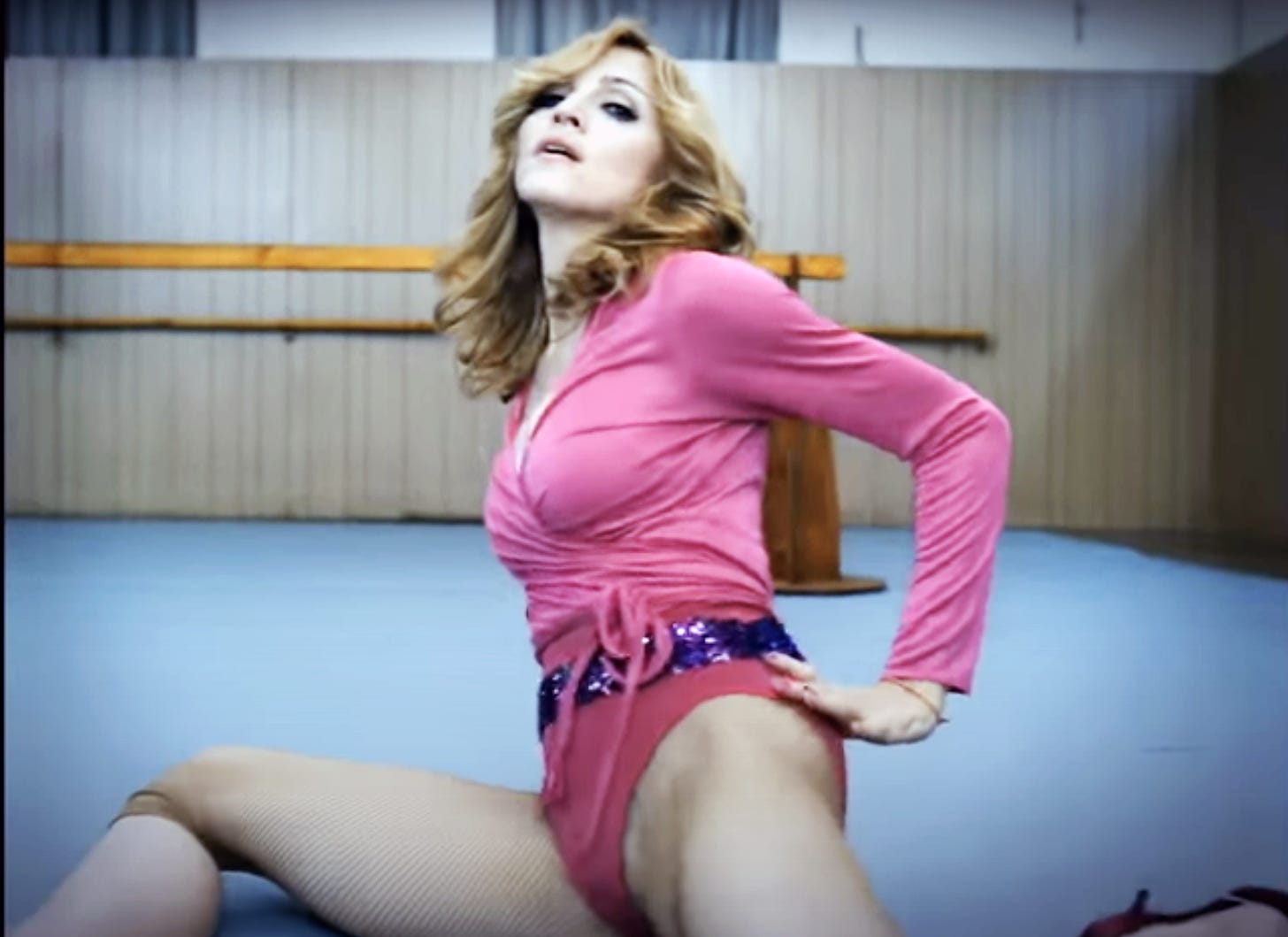The truth about 'Hung Up'
Dare we call it a comeback? Dissecting Madonna's mid-noughties pop juggernaut.
The truth about everything* is different every week! This week, it’s the turn of THE MADONNA DIARIES, a series of personal essays about Madonna’s back catalogue.
As a fan, to see Madonna on the back foot can be a painful experience. Or it would be, if history hadn’t shown us that, usually, a cornered Madonna means things are about to get really interesti…
Keep reading with a 7-day free trial
Subscribe to The truth about everything* to keep reading this post and get 7 days of free access to the full post archives.





